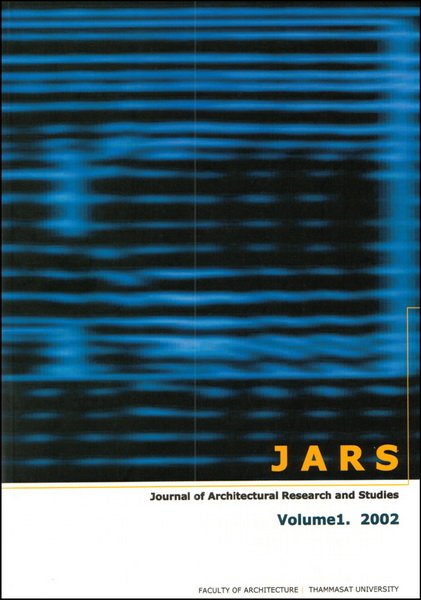Architectural Design for All
Main Article Content
Abstract
In today’s Thai society, all people have equal rights and opportunities. Everyone has a chance to earn his/her own living, to study, to communicate, and to enjoy both private and public space. However, without the provision of physical elements in universal design accessible for all people such as transportations, infrastructures, neighborhoods, or buildings, a lot of people will absolutely suffer and lose their opportunities.
The contents of this paper derive from 4 main sources: UN-ESCAP Guidelines on Promotion of Non Handicapping Physical Environments for Disabled Persons, the psychological insights from Dr. Prapod Patragas in the article “World Wide for Disabled Persons”, the 1991 Rehabilitation of Disabled Persons Act, and the 2001 Regulations on Provision of Equipment and Accommodation for the disabled. All the information has been analyzed to achieve the appropriate approaches and recommendations for planning and designing accessible environments for all types of disabled.
Downloads
Article Details

This work is licensed under a Creative Commons Attribution-NonCommercial-NoDerivatives 4.0 International License.
All material is licensed under the terms of the Creative Commons Attribution 4.0 International (CC-BY-NC-ND 4.0) License, unless otherwise stated. As such, authors are free to share, copy, and redistribute the material in any medium or format. The authors must give appropriate credit, provide a link to the license, and indicate if changes were made. The authors may do so in any reasonable manner, but not in any way that suggests the licensor endorses you or your use. The authors may not use the material for commercial purposes. If the authors remix, transform, or build upon the material, they may not distribute the modified material, unless permission is obtained from JARS. Final, accepted versions of the paper may be posted on third party repositories, provided appropriate acknowledgement to the original source is clearly noted.
References
Economic and Social Commission for Asia and the Pacific, United Nations (1995). Promotion of non handicapping physical environments for disabled persons : Guidelines. New York: United Nations.
ประพจน์ เภตรากาศ, นพ. (2539). สู่โลกกว้างบนหนทางผู้พิการ.กรุงเทพฯ: กองทุนสะพานสายรุ้งมูลนิธิเพื่อเด็กพิการ.
Levin, B., Paulsen, R., & Klote, J. (1981). Fire safety, access information bulletin. Washington, D.C.: National Center for a Barrier–free Environment.


